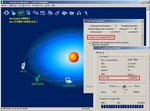johnjameson
Junior Member level 3
Hey Guys,
I have a visual basic *program here which can be used to read data from the serial port(pretty sure its working right as I have a com port emulator program to simulate data coming in and it reads it ok)
I also have a AT89S52 micro interfaced with a HC-06 bluetooth module which is paired with a pc.
Just wondering is there any example programs of sending data via bluetooth?
Just something simple like sending a number or a word
*left out program
I have a visual basic *program here which can be used to read data from the serial port(pretty sure its working right as I have a com port emulator program to simulate data coming in and it reads it ok)
I also have a AT89S52 micro interfaced with a HC-06 bluetooth module which is paired with a pc.
Just wondering is there any example programs of sending data via bluetooth?
Just something simple like sending a number or a word
*left out program
Last edited:
